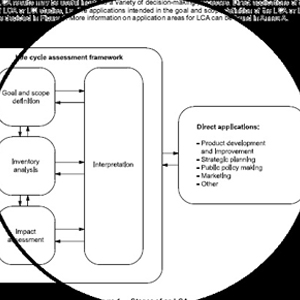There was a time when environmental work was seen merely as an added cost.
Today environmental performance is an important product property and resource conservation is synonymous with cost savings.

Product ecology, interpreted as the methodology to manage the impact a product has on the environment from production to usage and finally recycling, is today a standard competence in many companies.
The way to produce a Life Cycle Assessment, LCA, is regulated in a number of different well established ISO standards and technical reports.

A company can issue an Environmental Product Declaration, EPD, based on an LCA for a product, declaring values for a number of different impacts.
Today the most discussed impact is the Global Warming Potential often expressed by a carbon footprint value. Examples of other impacts are NOx-generation, eutrophication and resource depletion. In material supplying industries this has become important and especially so for the building sector where each application may use different competing materials.
It is our belief that the future belongs to those who can!

With almost nine billion people now sharing a globe stretched to its limits, emission abatement and resource conservation have become keys to our future. When studying global warming, researchers at steel producer Arcelor pointed out that in order to give the entire world’s population the western way of living we need to decrease the impact for this lifestyle per person to one eighth of today’s value. For a product this can mean to reduce the impact per kg of material by half, the amount of material per product by half and the number of new products per person by half. (1/2*1/2*1/2=1/8)

In other words, we have to improve production, product quality and design and last but not least consumer behaviour to move towards longer lasting and recyclable products. Is this even possible? For most researchers in the field the answer is clear: It is absolutely vital!

Steel and metals, offer a major benefit compared to other construction materials, being recyclable to the same or better quality. Since primary production uses more resources than secondary production it is important to clarify the considerable benefits of steel and metals recycling. At the same time we cannot become complacent and allow research and development to lose momentum. Iron and alloys, for example, are lost to slag in steelmaking and without proper sorting and blending a number of valuable alloys wind up becoming tramp elements in steel. These issues also hamper re-melting of Aluminium and other metals.
It’s now evident that we have to strive towards closing the materials usage loop throughout society, improving yields, using alloys in scrap, reducing the amount of slag and overall energy usage. Those who act decisively upon this realisation will also gain the competitive edge.
